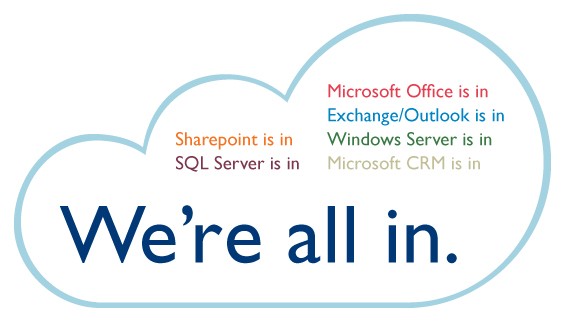Too Dumb for the Dummies Guide to Social Media?
We Really Dumb it Down for You!
Well, it’s not that you’re too dumb for social media — we all are. We listened to way too many “experts” about the best times to post, what to post, where to post and why to post content, but the one thing they never go into is that every business and person is different and what they need out of social media is what works best for that person or business and not what IBM, Apple and Microsoft do for their social media. They get more retweets when they sneeze than you will ever get in your lifetime. You can’t afford to sneeze on social media.
Social media, if done correctly, works for anyone! The web is essentially a big free-for-all of advertising and marketing and you should certainly take advantage of it. But that caveat “if done correctly” is the key to successful and productive client generation.
There’s a prevailing opinion that riding the wave of others into cyber-stardom is the best way to advance one’s ranking. All of the articles on connecting tell you to connect to high-powered people, which makes perfect sense. In any case, getting a retweet from someone with a large number of quality followers can give you up to a 5% click thru/follow rate. This only goes for their active followers. When numbers are high in terms of followers, you have to ask yourself how many are dead or abandoned accounts? How many are spammers, bought followers, people advertising their new book, etc. You might end up with 4 or 5 new followers for your troubles.
What about you? What’s right for you? What makes you comfortable about doing business and communicating with others?
Who You are is How You are Social
Working your own social media shouldn’t be a chore. By connecting with people all over the world, you are starting new friendships and building strong relationships.
How do you act when courting these connections? Are you easygoing and humorous, confident and all-business or somewhere in between? If you are going to run your own social media management then you need to make things uniform across each social media platform you decide upon. The best way to do that is to just be yourself. That makes running uniform posts and tweets and such easier.
You want a social media platform that will be home to your social needs. Like a favorite pub, some people prefer Twitter to Instagram and so on. When you can freely be yourself, write in your own voice, be proud of your photography, illustration or designs you place onto your website or blog, then using social media is an exciting pleasure. If not, then it’s a chore you’ll soon tire of. That’s why so many blogs, even in mid-sized companies are abandoned, Twitter feeds stop and Facebook pages show the last entry was over a year ago.
RELATED: Comments Section: Land of Constructive Public Discourse Or Playground of Trolls?
Humanizing your website or blog is a great way to build a following with a big trust factor. What’s more, you’ll stand out against similar sites that are active but boring and robotic. If you doubt your writing skills, take heart from the words of two great writers… as one destroys the not as great one:
(On Hemingway) “He has never been known to use a word that might send a reader to the dictionary.” ~ William Faulkner
(On Faulkner) “Poor Faulkner. Does he really think big emotions come from big words?” ~ Ernest Hemingway
“Big Emotions.” That is what you are doing with your site or blog now, isn’t it? People will come to your site or blog because your passion and emotion will speak to them. They will form attachments to you based on the shared interest and emotions about whatever it is you are putting online.
Even with all the greatest of words you will not win fans and followers, people still need to find you. That is why we use social media. Let people find you. There’s a reason it’s called “social” media.
Your Tools
Twitter, LinkedIn, Facebook and Pinterest are just a few of the leading avenues to get your name and work out there. The first step is to plan what you want to share with your audience and prospective clients. The next step is figuring out which social media tools will fit your needs and which ones you can dedicate time to on a regular basis. Building a strong social network isn’t difficult, but it does take time.
Let’s look at all the social media tools available and you can decide what best fits your needs.
Twitter is currently the hub of all social media. As I once explained to a client, it’s like “a billboard on the information highway you drive past at 70 miles per hour.”
Maybe that’s too simple of an analogy. Even without many followers, by using hashtags (like #webdesign, #technology, #smallbusiness), you can reach out to a wide audience of fellow twits, tweeters—whatever we’re called—and join conversations. Posting images and links to Twitter and sharing your expertise will draw traffic to your website.
One thing to remember when it comes to Twitter followers: quality over quantity. It’s not a race or competition. Spammers and useless tweets will just clog up your feed and keep you from seeing the tweets that are really important to you.
RELATED: Helping Your Client/Business Evolve Web Presence
Also, don’t be swayed to try one of those “1,000 real followers for $10” schemes. Aside from it providing some number of followers, if it’s reliable, which most aren’t, they aren’t really real… in reality. You can also be suspended from Twitter if they notice a huge number of followers over the usual 24-48 hours of followings services will promise you.
Building a following should be fair and balanced. “follow=follow back (there are exceptions, of course). Being choosey about who you follow and who you want to follow will only lead to a quality list of people you really want to connect with, while having great interactions.
There are 3rd party tools, widgets and apps for Twitter. Find them, try them and see which ones fit your needs.
The premier business networking site, LinkedIn is very much like Facebook but with all your coworkers instead of your high school friends and relatives. By joining groups, you can connect to prospective clients and improve your clout by posting discussions on these groups. As you build your own network, you’re also accumulating second- and third-degree connections exponentially. I’m a great believer in connecting with everyone, because even former coworkers are valuable as they move around the industry.
It’s a captive audience there to do business, so it’s highly recommended for businesses but there is one thing to remember—connect with those who can use your design skills. I’ve found it’s best to concentrate on small- to medium-sized businesses for freelance work. If you’re looking for a staff position, doing LinkedIn company search will show you people in that company. Connecting with people who work where you want to work can give you an in when a position opens.
If your website or blog is a business to business (B2B) company, then LinkedIn is a must for you as a social media platform.
Facebook is a misunderstood social media tool. Personally, I just use it to stay connected with friends. But it can easily be used for business, because your friends, family and former coworkers are your most important network. They care about you because you have a personal connection. If you need a job, have something to offer, need an introduction or want the 411 on an opening in a company for which they work, they will be there for you more than any other connection through the web.
Does having a fan page or setting up Facebook ads do anything for your business? According to Facebook stats, it should be lucrative. Facebook reaches the common person. These are people with various interests. With the use of hashtags, your posts (in a public page) can really help you gather likeminded followers.
RELATED: Walmart Acquires Kosmix
A Facebook page is more relaxed and casual. people are at ease when they visit your page, so build on that strength by asking people to “like” your page, visit your website or blog (although some FB pages ARE people’s websites and blogs!) and the FB analytics built into your page will help you understand posting times, content reach, the demographics of your audience and other factors that will help you across other platforms.
Was one of the newest social media kids on the block but Pinterest really took off. Many popular soacial media sites are now using the Pinterest layout for image sharing.
By pinning your best work on curated boards, you can share your style with the world—and they can share it with all their friends easily! But Pinterest has a terms of service policy you might not like. Read the TOS carefully, and decide whether you’re willing to go for it. If you don’t mind the possibility of a third-party being able to license your work, then the ease of use and SEO of your albums make this a viable marketing tool.
Can you do without it? Depends on your needs!
Google+
The jury is still out on this social network by search goliath Google. Many people predicted it would kill Facebook, but Facebook is still going strong, and there have been plenty of complaints about how the circles on G+ work, with lots of concerns about privacy since public G+ posts can pop up in search results now. But that could be a boon for a creative business. I don’t think Google+ is worthless, but is hasn’t yet proven itself as a truly important social network in any circles aside from hardcore techies.
Google+ has some strengths that other SM sites have: communities (similar to groups in LinkedIn), which allows you to interact with prospective followers and Hangouts, which is a group live discussion.
Always keep your eye on G+. Perhaps add people to your circles, just in case you find G+ suits your needs.
Put it all together
The old saying “you can’t be everywhere at once” also applies to social networking. It’s one thing if you have a design studio and can hire a full-time social media manager, but when it’s only you doing your assignments, bookkeeping, client contact, advertising and marketing, you need to plan your social media outreach carefully by considering which sites are frequented by your prospective clients and which channels you can keep up on a regular basis. It’s better to have one really effective outreach venue then to have six that do nothing.
Top image ©GL Stock Images




